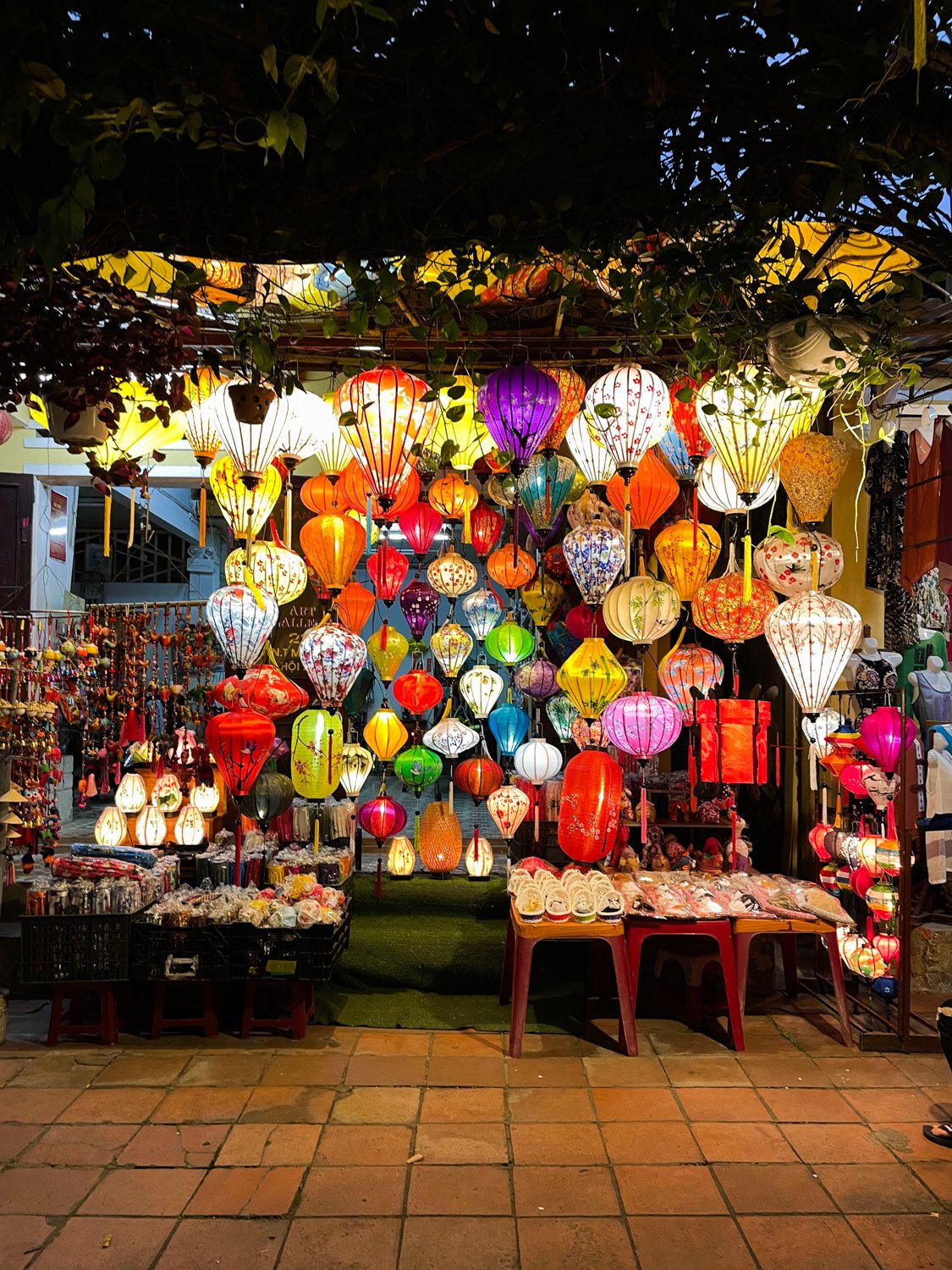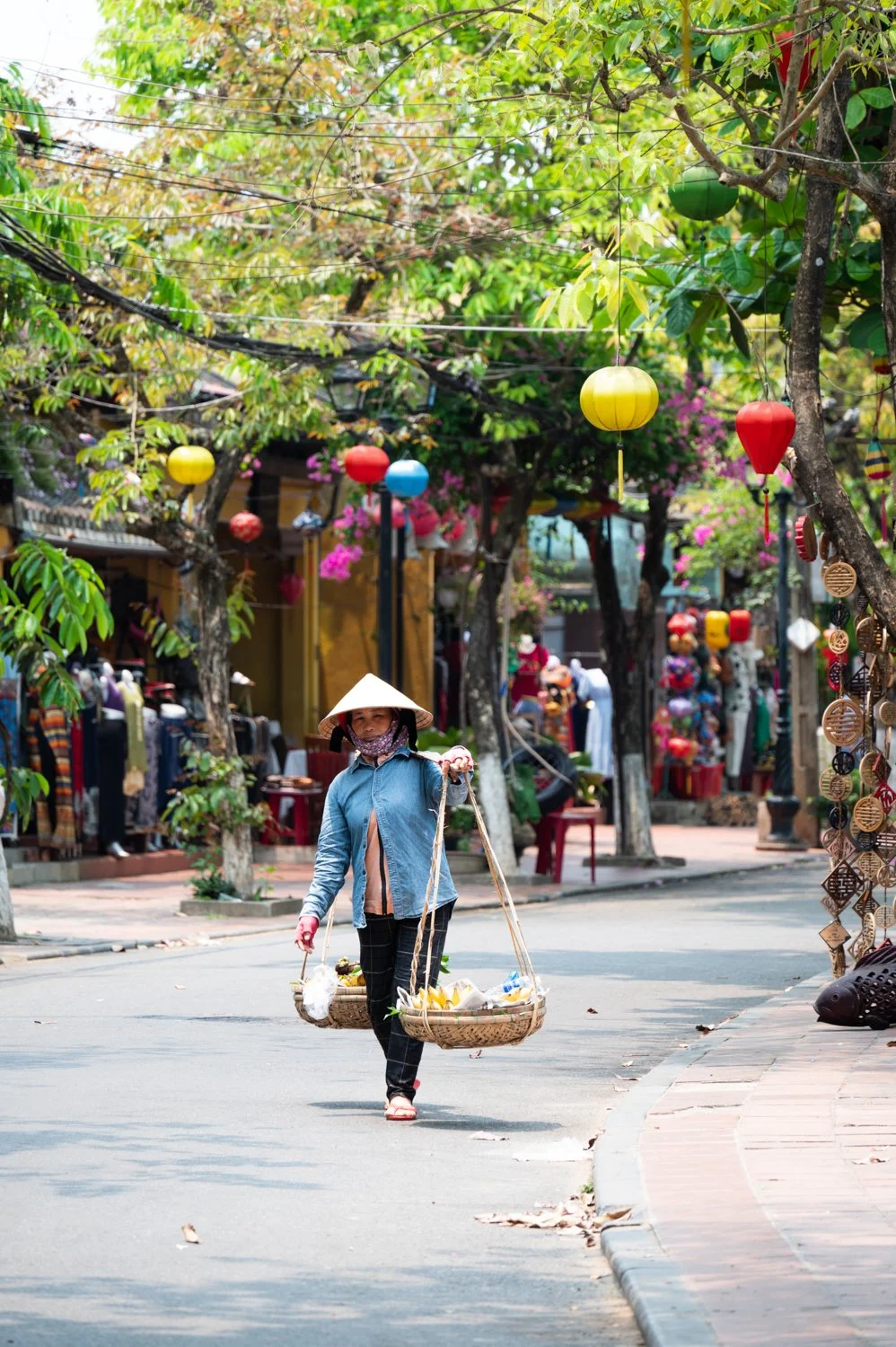The city of lanterns: exploring Hội An
So many voices echoing from every alley, coming from the river, on which float bamboo lanterns attached to dozens of small pointed boats and on whose waters float small paper candles that drift away following the current, carrying with them wishes and hopes.
Streets crowded with people, strolling spellbound under the bougainvillea and jasmine that fall from discolored rooftops like a shower of colorful, fragrant flowers filling the air and the eyes. Dozens and dozens of lanterns, crowding the souvenir stores, or swinging bluntly in the wind among the trees and over the heads of gawking passersby.
You have to dodge rickshaws and bicycles, carts selling mango cakes and shrimp pancakes roams all around.
Despite Hoi An's historic beauty and an honored place among UNESCO World Heritage Sites, it is the magic of the atmosphere that permeates its pedestrian streets that leaves a mark on the memory. The chaos, the smells, the noises, the colors, all in perfect harmony in the imperfection of its details. A truly magical place that invites you to experience, rather than see.
It makes you want to sit on a tiny, clammy stool at the edge of the river eating skewers of meat cooked on a tiny grill on the sidewalk by a smiling, barefoot little man. To be dragged by insistent tourist-catchers from the cafés onto a terrace sipping coconut coffee and watching life flow by along the river. Entering a pottery store making your way through the bowls on the floor looking for some souvenirs or haggling, writing on a calculator, with the ladies at the market trying to sell you fresh fish and mangosteens.
It makes you want to change plans, to stop and see a street show with emperor costumes, to enter a tea store to sip a bamboo infusion while contemplating a lily pond.
An uninterrupted succession of tailors' stores, souvenirs, cafes, and cheap stuff, yet there is something unique and special about it, wrapped in the light of lanterns and music echoing from the bars.
Hội An was a thriving port located on the trade route between India and China. Starting in the 1600s, numerous merchants would stop here for several months, waiting for favorable winds to return home. The various merchant communities, especially the Chinese, colonized the areas accessible by the river, and built dwellings, which they occupied periodically, and guild houses or temples, in which they gathered. Initially only temporary inhabitants, as time went on some of them began to be permanent residents in this harbor, which for a long time became a bustling port of call.
Today, some historic dwellings, guild houses and some temples can be visited. As you enter, you have a glimpse into the past, with imposing dark wooden dwellings with architectural elements from different cultures, still inhabited by descendants of the generation that founded the city.
It is easy to visit Hội An: three main streets parallel to the river house most of the historic and most valuable buildings. This area is closed to traffic (of cars), and you can also walk freely through the cross alleys from which the Thu Bon River peeps out, separating the old town from a few islets that are home to many noisy restaurants and a few resorts.
Mostly it is a matter of casually strolling through its streets, stopping here and there to visit a few historic buildings. These are accessed through a ticket (150,000 VND) with 5 beads that can be purchased at various kiosks scattered around the old city. At each place you visit, a bead will be detached, and if you want to explore more attractions, you will have to buy another one. In our experience, 5 is an adequate number of attractions to get an idea of the architecture of these buildings. The Japanese covered bridge, which you won't struggle to notice, is technically only accessible with a ticket. But considering that it is a gateway between the central area of the old city, and a more marginal and quiet, still pedestrian area, no ticket is charged, unless you want to go inside to see the inner hall of the bridge.
In the evening, the riverfront comes alive exaggeratedly. Dozens of street food stalls appear, unfurling an expanse of improbably low stools and tables on which to enjoy street food. These, contribute to the atmosphere amid unusual scents and beautiful lighted lanterns.
Hội An is home to dozens of handcrafted lantern makers, made of bamboo and silk, which not only populate the stores but also decorate every corner of the city. Especially in the evening, they create a truly magical and unique atmosphere. If you have the chance to visit Hội An on a full moon evening, we know that the use of any source of illumination other than a lantern is prohibited in the city, and locals go far out into the river to deposit hundreds of paper lanterns on its waters.
The market along the river is also a folkloric experience. Ladies, waiting under their cone hats, carefully arrange beautiful fruits, but especially lots of herbs, in the characteristic circular bamboo baskets. Along the river, in the stillness of the morning, you will happen to have to dodge dozens of these baskets, in which handmade noodles dry in the sun.
You may visit the market, eventually, in a Vietnamese cooking class, an activity popular in Hội An and one that will provide you with an opportunity to learn more about the local culture.
From Hội An it is also easy to reach My Son shrine, an hour's drive away, for a rewarding and easy day trip.


















